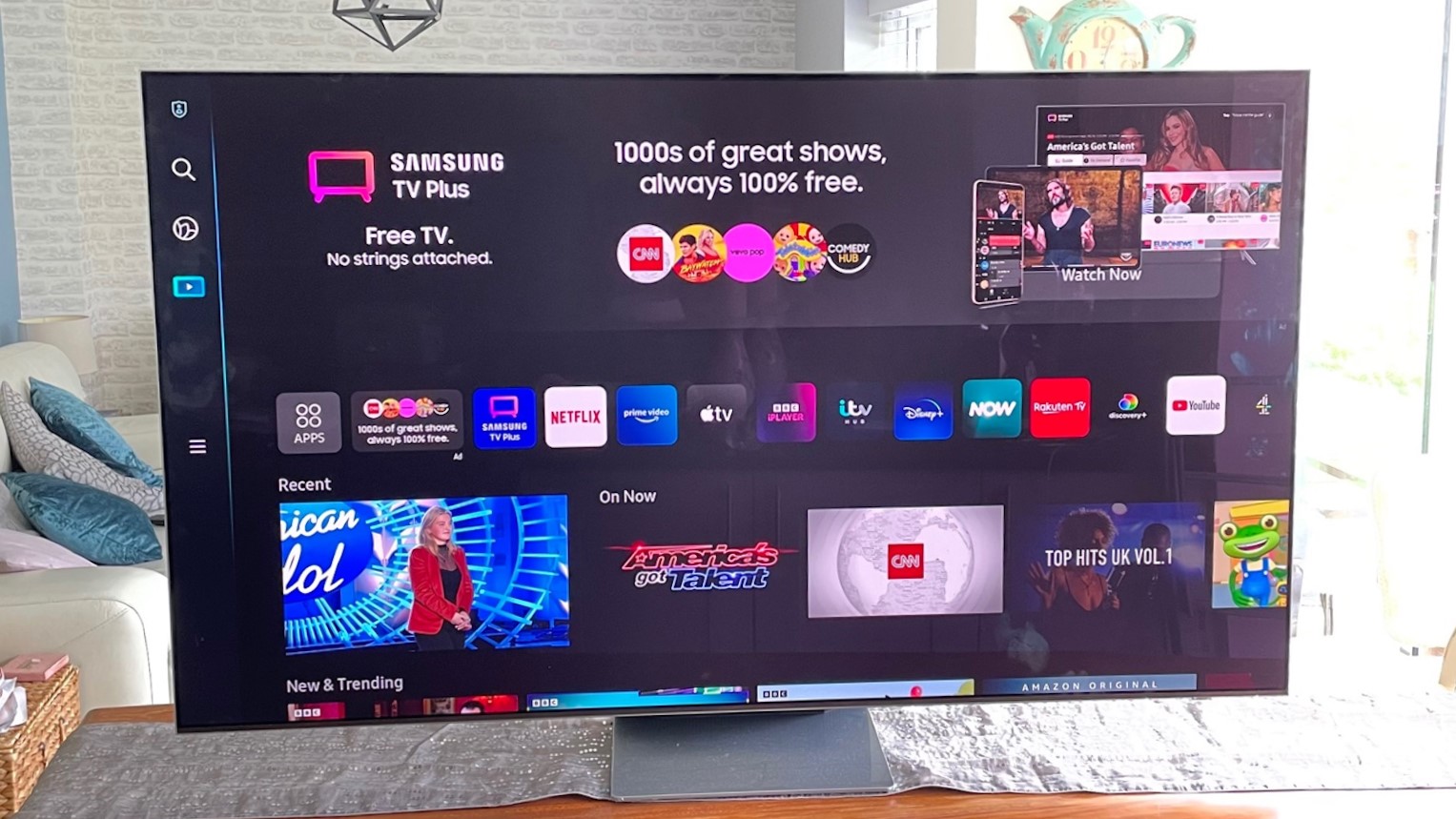The cheaper QD-OLED TVs we're hoping for might be on the way next year
And more sizes are coming too

This year, Samsung finally launched its own competitor to the best OLED TVs – the Samsung S95B, which uses a next-gen 'QD-OLED' screen. By combining the Quantum Dot color technology that Samsung's QLEDs are famed for with the pixel-precise contrast of OLED, it produces images that we called "ground-breaking" and "sensational" in our five-star review.
The one downside is that QD-OLED technology isn't cheap – new-gen tech never is – and it also only comes in 55- and 65-inch sizes currently.
But it sounds like Samsung Display has plans in place that are likely to change both of these issues, ready for next year's models. According to a report in The Elec, Samsung Display has already increased the yield rate to 85%, and it expects to increase the number of QD-OLED panels it's producing by 30% towards the end of the year.
The 'yield rate' refers to how many of the TV screens Samsung Display actually work well enough to be used in a final product. In 2021, QD-OLED's yield rate was said to be just 50%, meaning that half of the screens it attempted to make were waste. A low yield rate drives up the price of the screen, because you have to factor the cost of all that waste material and energy into the price of the successful screens. So this increase in efficiency means that less can be charged for the QD-OLED panels.
And increasing the number of screens being made by 30% can also mean cheaper screens, because economies of scale improve (meaning: the more you make of something, the cheaper each individual one becomes to produce).

At the same time, investing in these new production facilities will reportedly mean that Samsung is able to produce 49-inch and 77-inch QD-OLED screens too. However, that's not as exciting for mid-size TV fans as you might hope: The Elec's story suggests that the 49-inch panel will be aimed at being a monitor rather than a TV – expect a super-sized 32:9 version of the ultra-wide 34-inch Alienware QD-OLED monitor than a 4K TV, based on what The Elec says. We've seen this kind of thing (without OLED) before: the Samsung Odyssey Neo G9 and the Philips Brilliance 499P9H, for example.
However, there is a catch: Samsung Display is waiting to invest in these new production facilities until it hears whether Samsung Electronics (the part of the company that actually puts the screens into TVs and monitors) will commit to launching more QD-OLED products.
Sign up for breaking news, reviews, opinion, top tech deals, and more.
That's hard to predict at this point, but given that Samsung and LG have been unable to agree on a price for Samsung to use regular (non-QD) OLED screens for its TVs, it only makes sense for Samsung to push forward more strongly with its own version of OLED as an alternative.
And the price could drop further after 2024
There's a second report in The Elec that's also good news for QD-OLED pricing in the future – but it appears to be further off. The report reveals that Samsung Display has been working on a new thinner way of building QD-OLED screens with a company called ETRI, as confirmed at a display conference in South Korea.
We don't really care about the thinness for aesthetic reasons (have you seen current OLED TVs? Thickness is not an issue!), but the way Samsung and ETRI are planning to achieve this is by removing a lamination layer that's included in the current screens. This would simplify the production, making the whole process more efficient, and therefore cheaper per-panel in the long term.
However, the report says that commercialization of this tech is unlikely until "after 2024".
It's no surprise that Samsung has plans for more advanced screen designs in the works – Samsung Display is one of the leading centers of OLED product research, and has also been researching ways to improve the efficiency of the blue OLED pixels that QD-OLED screens rely on to generate their light, which would also help bring down the price of QD-OLED, but similarly appears to be several years away.

Matt is TechRadar's Managing Editor for Entertainment, meaning he's in charge of persuading our team of writers and reviewers to watch the latest TV shows and movies on gorgeous TVs and listen to fantastic speakers and headphones. It's a tough task, as you can imagine. Matt has over a decade of experience in tech publishing, and previously ran the TV & audio coverage for our colleagues at T3.com, and before that he edited T3 magazine. During his career, he's also contributed to places as varied as Creative Bloq, PC Gamer, PetsRadar, MacLife, and Edge. TV and movie nerdism is his speciality, and he goes to the cinema three times a week. He's always happy to explain the virtues of Dolby Vision over a drink, but he might need to use props, like he's explaining the offside rule.